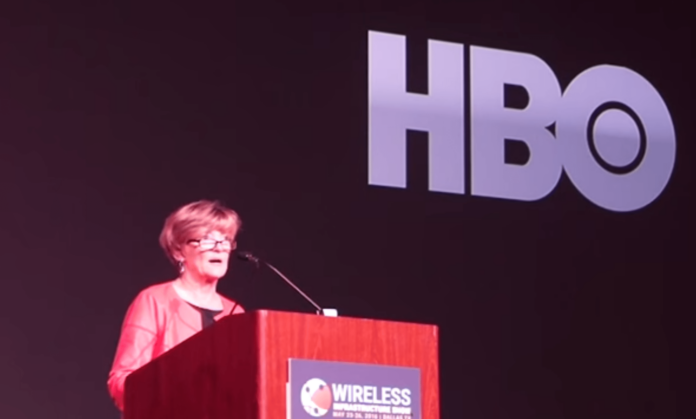DALLAS — As we enter an era of on-demand TV anywhere, content creators and distributors are only one part of the equation. Without the wireless infrastructure to make that content available over mobile networks, and at a high-quality, a huge potential audience is unavailable.
That was the message from HBO chief digital officer and EVP of technology, Diane Tryneski, during a keynote presentation at the Wireless Infrastructure Show hosted by the newly renamed Wireless Infrastructure Association (formerly PCIA).
She said quality of experience, driven in large part by the quality of content delivery networks, is key to HBO as it’s a “discretionary purchase. Each month our subscribers [131 million globally] vote on our brand with their wallet. As a transactional business, retaining loyal customers is critical to our success. Subscribers roll on and off every month. It’s essential that we provide a compelling subscriber experience to ensure they stay with us for the long run.”
Tryneski gave a little background on HBO Go, which allows mobile streaming with a cable subscription, and HBO Now, which is a standalone service not requiring a cable subscription.
“We knew mobility was going to be important,” when we launched in 2010. “Consumers wanted even more flexibility in where and when they watched content,” she said. “Increasingly, they wanted to become untethered from their TV screens.”
That service was born along with the iPad, and its standalone counterpart HBO Now, in response to the growing importance of “cord-cutters” and “cord nevers” as a market segment.
Referencing zero-rated streaming services like T-Mobile US’ BingeOn, for instance, Tryneski said these types of promotion allow “our businesses [to] move together. More HBO subscribers mean more demand for our partners.”
She noted that by 2020 75% of mobile traffic is projected to be video-based. “This growth will continue, largely driven by increases in video consumption with streaming services such as HBO Go and HBO Now. Mobile and connectedness will drive the need for even more robust and faster wireless networks as we at HBO continue to innovate and create unique subscriber experiences. These new experiences, such as virtual or augmented reality, have the potential to transport our subscribers into the world our production partners create.
“So what does the wireless industry need to do to deliver the expanding consumer experience? Continue to make investments that provide high-quality services for a growing number of devices and things.”

